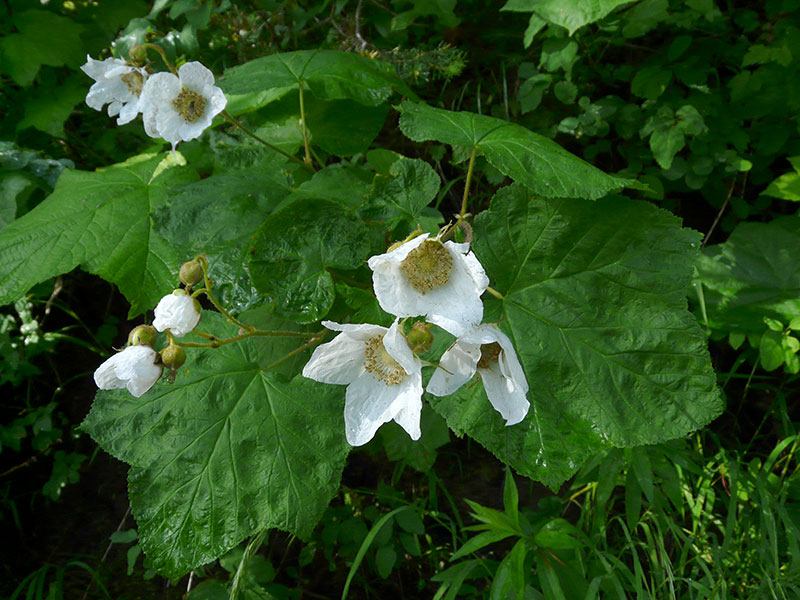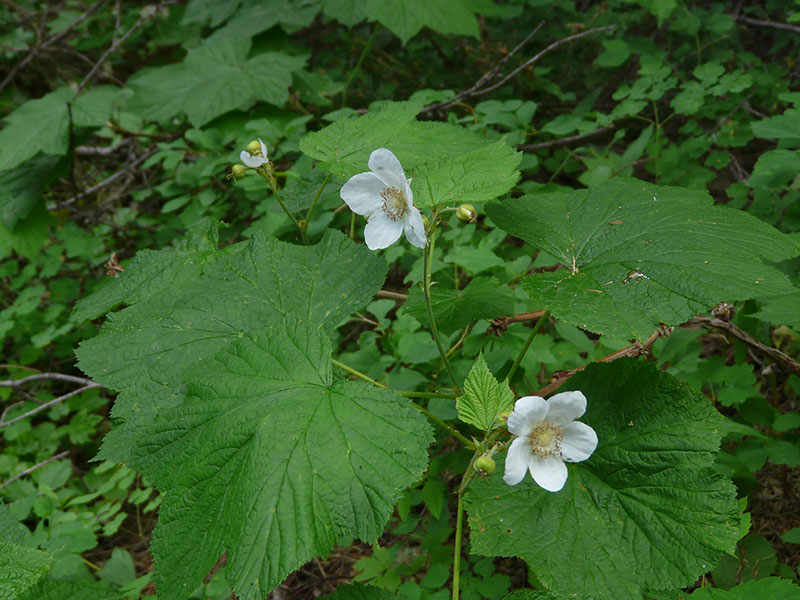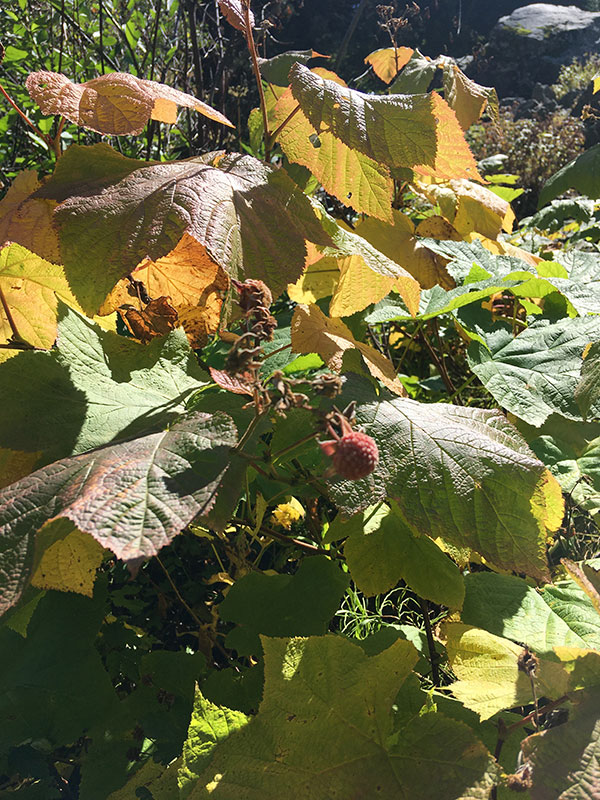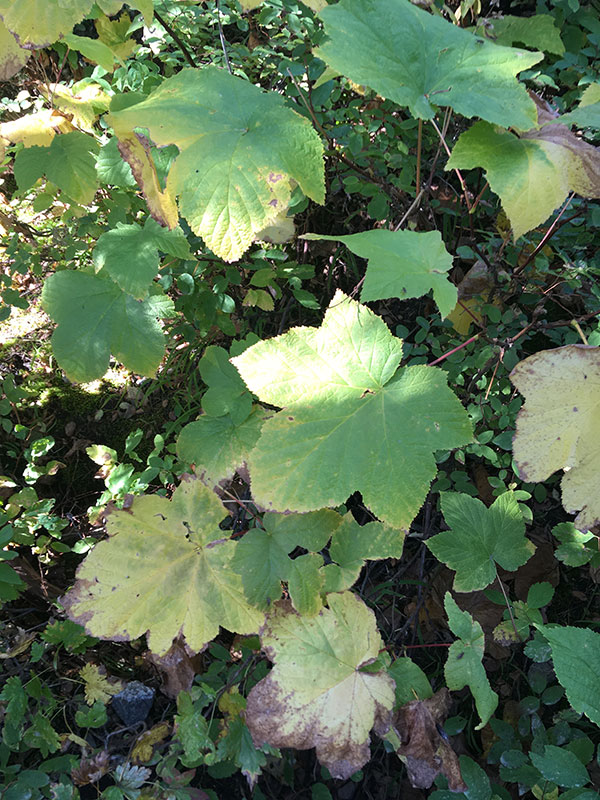Rubus parviflorus / thimbleberry
- raspberry-like shrub usually in a clump
- white flowers with many stamens, up to 2.5 inches diameter
- large, fuzzy maple-like leaves
- blooms in spring; red, raspberry-like fruit in the fall
Also known as: western thimbleberry, western thimble raspberry, white-flowering raspberry
Thimbleberry is a raspberry-like shrub with white flowers, large, fuzzy maple-like leaves and red, raspberry-like fruit. It often grows in large clumps, spreading by rhizomes. The leaves are larger than other members of the genus and fuzzy. When not in flower, it is easily distinguished from any maple by the fact that the leaves are alternate rather than opposite.
Thimbleberries bloom in the spring, June and July in the Valley, and ripen at the end of summer, September-ish. The flowers are up to 2.5 inches in diameter with five white petals, “the texture of crumpled tissue paper”. They have numerous pale yellow stamens that brown with age, typical of many rosaceae. The flowers grow in terminal clusters with 3-7 flowers per cluster. The flowers are large for the genus, despite the specific name, parviflorus, which means small-flowered. Averaging large and small, I guess “normal” is about the right size.
The berries, like raspberries and blackberries, are not technically berries but aggregates of small, red, hairy drupelets with a thimble-like hole in the middle. As with the other “x-berries”, these provide lots of little pips to get stuck in your teeth. Thimbleberries are edible and have been described alternately as having a “subtle honey and elderflower aroma, and a sweet/tart taste similar to a raspberry,” or as being pretty much tasteless. Or even… “after a brief sweet/sour taste, the mushy berry turns bland in the mouth.” Either way, one really good thing for berry pickers is that thimbleberry has no prickles.
Thimbleberry typically grows along roadsides and in forest clearings – sometimes in the understory – but can also grow in some wetlands. It is considered an early species in ecological succession after major disturbances like road cutting, clear cutting or fire.
| Color | |
|---|---|
| Family | |
| Blossom size | |
| Inflorescence size | |
| Inflorescence type | |
| When? | |
| Where? |



